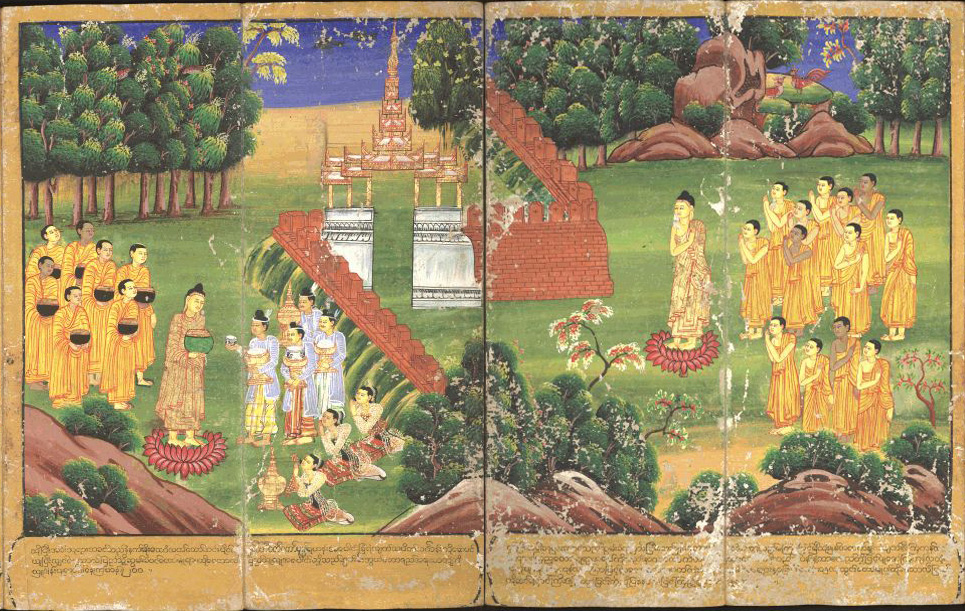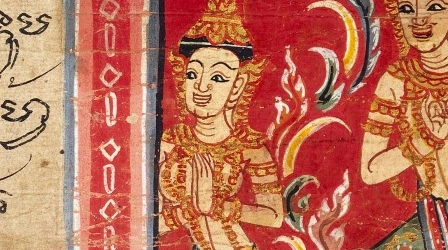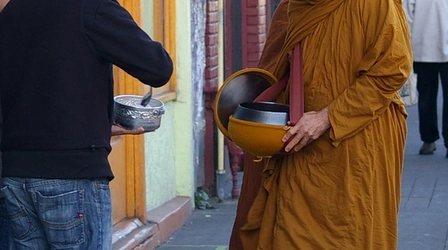The Vinaya
Subscribe to this topic via: RSS
The Vinaya Piṭaka is the first section of the Pāli Canon. It contains the code of conduct for the monks and nuns of the Theravāda tradition along with many entertaining stories from the early saṅgha.

An 18th century, Burmese watercolor in The Bodleian Library depicts how the Buddha and his monastic disciples would mindfully walk for alms. (CC BY 4.0)
Table of Contents
Books (2)
Canonical Works (8)
Featured:
-
The first English translation of the Vinaya Pitaka, Bhikkhu Sujato and Bhikkhu Brahmali prepared this ebook version of the PTS volumes.
See also:
Readings (18)
Featured:
-
⭐ Recommended
The tale is best understood in the light of the need of the early Buddhist tradition to demarcate its position in the ancient Indian context vis-à-vis ascetic practices and ideology.
-
Some scholars connect the verbs ujjhāyati, khīyati, and vipāceti to negative emotional states (especially irritation and anger). Others connect the verbs to judgmental appraisal and the spreading of ill-fame. I show how both interpretations are valid.
-
The argument that a nun called Sthūlanandā really did have pendulous breasts and large buttocks is, pardon the pun, a thin one. As stock images of uncouth femininity, these outsized and ungainly physical features serve the representational project of this passage
33 pages -
At the beginning of the first section of the tenth chapter of the Cullavagga, the events immediately preceding the establishment of the Buddhist Order of nuns are described. In general terms these are as follows:
-
⭐ Recommended
Ananda, Upali and Devadatta act out a theoretical quarrel about Buddhist attitudes to law
-
Locating Humour in Indian Buddhist Monastic Law Codes: A Comparative Approach (2008) – Shayne Clarke
It has been claimed that Indian Buddhism, as opposed to East Asian Chan/Zen traditions, was somehow against humour. In this paper I contend that humour is discernible in canonical Indian Buddhist texts, particularly in Indian Buddhist monastic law codes (Vinaya). I will attempt to establish that what we find in these texts sometimes is not only humourous but that it is intentionally so.
-
Buddhist texts are, by and large, nice. There’s no draconian punishments, no irrational fervor, no ‘smiting with swords’. A serene air of reason, balance, and sanity pervades.
This niceness is a huge problem.
-
When reviewed like this, the whole story appears a piece of improbable fiction, possibly a very distorted account of something which actually did take place. It is strange that a story like this, which does no credit to the Buddha, but quite the opposite, was permitted to remain in the Vinaya.
See also:
Audio/Video (2)
Reference Shelf (2)
Featured:
-
A dictionary of the Pāli vocabulary found in the Vinaya Piṭaka.
See also:

